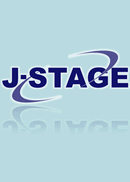All issues

Volume 9 (1995)
- Issue 4 Pages 1-
- Issue 3 Pages 1-
- Issue 2 Pages 1-
- Issue 1 Pages 2-
Predecessor
Volume 9, Issue 3
Displaying 1-5 of 5 articles from this issue
- |<
- <
- 1
- >
- >|
-
[in Japanese]1995 Volume 9 Issue 3 Pages 1-9
Published: September 30, 1995
Released on J-STAGE: September 24, 2012
JOURNAL FREE ACCESSDownload PDF (1384K) -
[in Japanese]1995 Volume 9 Issue 3 Pages 10-21
Published: September 30, 1995
Released on J-STAGE: September 24, 2012
JOURNAL FREE ACCESSDownload PDF (1630K) -
[in Japanese]1995 Volume 9 Issue 3 Pages 22-35
Published: September 30, 1995
Released on J-STAGE: September 24, 2012
JOURNAL FREE ACCESSDownload PDF (2146K) -
[in Japanese]1995 Volume 9 Issue 3 Pages 36-44
Published: September 30, 1995
Released on J-STAGE: September 24, 2012
JOURNAL FREE ACCESSDownload PDF (1261K) -
T. Moritan, H. Shimazu, R. Urata, K. Tsuchiya1995 Volume 9 Issue 3 Pages 45-52
Published: September 30, 1995
Released on J-STAGE: September 24, 2012
JOURNAL FREE ACCESSMany studies have been done on the origin of Korotkoff sounds. But there are still quite a few unclear points which are yet to be solved. It may be due to that the previous studies limit the single origin for the occurrence of the sounds. We therefore made a new theory that there must be the plural rational origins of Korotkoff sounds, and with that theory, we experimentally proved the interpretation of the Swan's classification of Korotkoff sounds (I to V) and the origin of auscultatory gap, which have not been discussed very much before. Analyzing the sound field of blood vessels on the basis of Howe's formula, we determined that the sounds from vessel wall are induced from turbulence of flow and shock wave. Along with that taking tube law of the artery pressure with the occluding cuff in consideration, it is clear that shock wave could not occur at or in the vicinity of the measuring point of systolic pressure. Consequently, this shows that in the area of measuring point, the eddy caused by turbulent flow induces the sound. On the other hands, in the vicinity of the diastolic pressure measuring point, the sounds are caused by shock wave. These two sound sources obviously have a difference in time required to the occurrence of sound from the formation of arterial pulse wave, and in the frequency of the sounds. These two points were experimentally inspected through the indirect measurement of brachial arterial pressure. Those exprimental studies produced the same results as the theoretical assumption. Thus, it is inferred that there are at least two origins for the occurrence of Korotkoff sounds.View full abstractDownload PDF (1057K)
- |<
- <
- 1
- >
- >|